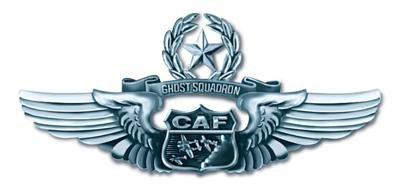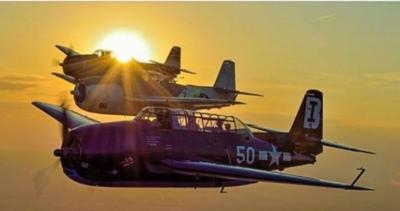Phantom of the Ghost Squadron
Formed in 1961 as the Confederate Air Force and renamed to appease the poor downtrodden folks incapable of differentiating the varying meanings and connotations of the term confederate, the organization known today as the Commemorative Air Force (CAF) is a Dallas-based non-profit dedicated to the preservation and display of historical aircraft—in particular, warbirds.

Comprising some 13,000-members, seventy units, and north of 170 aircraft, the CAF boasts the world’s largest collection of airworthy warbirds—which is to say, vintage military aircraft.
On 17 April 2023, following six-months of painstaking research undertaken by one of the world’s preeminent military aviation historians, the Commemorative Air Force’s Capital Wing proudly announced a World War II combat warbird had been added to its fleet—more or less.
The aircraft in question, a Stinson L-5 Sentinel dubbed Gayle Ann, has been a part of the CAF’s Ghost Squadron—the organization’s fleet of historic aircraft—for nearly thirty-years. Nobody, however, knew the little plane had seen combat.
Wholly unaware of Gayle Ann’s impressive past—the CAF’s Capital Wing has, for years, flown her routinely. Newly edified by the aforementioned historian, the Capital Wing knows now that Gayle Ann was an OY-1, the U.S. Marine Corps designation for an L-5 type Stinson.
In 1943, the aircraft was received by the U.S. Marines in Quantico, Virginia, and assigned to VMO-4, Marine Observation Squadron 4. The following year, Gayle Ann was transported to San Diego, loaded aboard the USS White Plains (CVE-66) escort aircraft carrier, and shipped to Pearl Harbor, Hawaii. After a brief stint on Oahu, the airplane was conveyed to Micronesia’s Mariana Islands, some 115-nautical-miles north of Guam. Records indicate that on 15 June 1944, the OY-1 known today as Gayle Ann flew off the USS White Plains and provided aerial artillery spotting during the bloody Battle of Saipan.
Gayle Ann is one of only two combat Sentinels known to have survived the Second World War and remained airworthy into the 21st Century. The overwhelming majority of extant warbirds—notwithstanding their combat squadron liveries and victory markings—never saw combat; many never left U.S. soil. The CAF Capital Wing is proud to operate one of exceedingly rare warbirds that took part in WWII Allied combat operations.
Thorough to the utmost, the aviation historian turned-up additional historic data—data linking Gayle Ann to the CAF’s Capital Wing.

The USS White Plains, while transporting Gayle Ann to the Mariana Islands, was laden, also, with a complement of eight TBM Avenger torpedo bombers. Serendipitously, the second warbird in the Capital Wing’s charge is a TBM Avenger that goes by the endearing if not overly-threatening nom de guerre Doris Mae.
For years, Gayle Ann and Doris Mae, under the auspices of the CAF’s Capital Wing, have traveled throughout America’s Mid-Atlantic region as a matter of convention—the two aircraft appearing side-by-side in innumerable air-shows, static displays, tours, and aviation-themed events. Henceforth, however, the Capital Wing will look upon the two machines as elements of an historic snapshot—a poignant and enduring image captured in 1944 on the deck of the USS White Plains as she plied the Pacific Theater’s dangerous waters enroute to the Mariana Islands, steaming with all her might to deliver her invaluable wartime cargo of combat aircraft, munitions, provisions, and human lives.
 Senator Pushes FAA to Accelerate Rocket Launch Licensing
Senator Pushes FAA to Accelerate Rocket Launch Licensing Classic Aero-TV: RJ Gritter - Part of Aviations Bright New Future
Classic Aero-TV: RJ Gritter - Part of Aviations Bright New Future Aero-FAQ: Dave Juwel's Aviation Marketing Stories -- ITBOA BNITBOB
Aero-FAQ: Dave Juwel's Aviation Marketing Stories -- ITBOA BNITBOB ANN's Daily Aero-Linx (10.27.24)
ANN's Daily Aero-Linx (10.27.24) ANN's Daily Aero-Term (10.27.24): Clearance Void If Not Off By (Time)
ANN's Daily Aero-Term (10.27.24): Clearance Void If Not Off By (Time)




